Want to learn how to make a homemade thermometer for kids? This DIY thermometer is an AWESOME science activity for kids of all ages! Create your own thermometer from a few simple materials, and test the indoor and outdoor temperature of your home or classroom for simple chemistry!
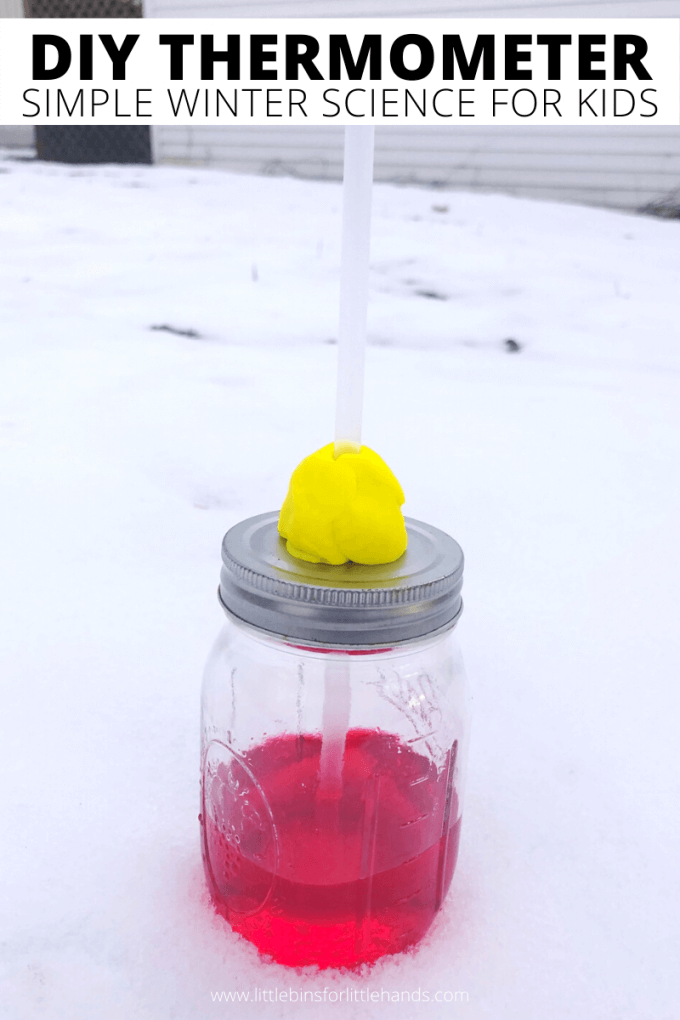
Make A Thermometer For Winter Science
Get ready to add this simple science project, to your science lesson plans this season. If you want to learn how to make a homemade thermometer, let’s dig in. While you’re at it, make sure to check out these other fun winter science experiments for kids.
A thermometer shows the temperature when liquid inside it moves up or down on a scale. Explore how a thermometer works when you make a homemade thermometer for this project.
Our science activities and experiments are designed with you, the parent or teacher, in mind! Easy to set up, quick to do, most activities will take only 15 to 30 minutes to complete and are heaps of fun! Plus, our supplies lists usually contain only free or cheap materials you can source from home!
This is another easy-to-set-up winter science experiment that pulls from what you have around the house. We love science that can be set up in minutes and is hands-on for the kids.
My goal is to have you feel comfortable with enjoying science at home. Learn how easy it is to set up science at home with your kids or find fun new ideas to bring into the classroom. January is a fantastic time to explore all kinds of winter theme science.
Getting Started With Simple Science Activities
Getting started with simple science activities for kids can be an engaging and educational experience, whether in the classroom or at home. Introducing children to the scientific method is fundamental in cultivating their curiosity.
Scientific Method: Begin with a question or hypothesis, conduct experiments, observe results, and draw conclusions.
Kitchen science provides a practical and accessible avenue for hands-on exploration. Everyday household items can be transformed into captivating experiments, making science fun and relatable.
The benefits of these activities extend beyond mere entertainment. They foster critical thinking skills, encourage curiosity, and instill a love for learning. Embracing simple science activities makes education enjoyable and sets the foundation for a lifelong appreciation of the scientific world.
Helpful Science Resources
Here are a few resources that will help you introduce science more effectively to your kiddos or students and feel confident yourself when presenting materials. You’ll find helpful free printables throughout.
- Best Science Practices (as it relates to the scientific method)
- Science Vocabulary
- 8 Science Books for Kids
- All About Scientists
- Free Science Worksheets
- Science Supplies List
- Science Tools for Kids
- Join us in the Club
How Does A Thermometer Work
Many commercial thermometers contain alcohol because alcohol has a low freezing point. As the temperature of the alcohol increases, it expands and causes the level within the thermometer to rise.
The level of the alcohol corresponds to the printed lines/numbers on a thermometer indicating the temperature. Our homemade version does a similar thing.
However with your homemade thermometer you aren’t actually measuring temperature, just seeing temperature changes.
If you have a real thermometer, you can use it to make a scale on your homemade thermometer: let your bottle get to room temperature and then mark the straw with what the actual room temperature is.
Then set the bottle in the sun or in the snow and do the same. Mark several different temperature levels and then watch your thermometer for a day and see how accurate it is.
FREE Printable Winter STEM Activities Guide!
How To Make A Thermometer
SAFETY NOTE: Please make sure that liquid is discarded at the end of this project and all your kiddos know this is not safe to drink. If necessary, make the liquid a “yucky” color.
Supplies:
- Mason jar with straw lid
- Clear straw
- Playdough or modeling clay
- Water
- Rubbing alcohol
- Cooking oil (any kind)\
- Red food coloring
Check out more science in a jar projects for mason jar science!

Instructions:
STEP 1: Add red food coloring, 1/4 cup water, 1/4 cup alcohol and a tablespoon of oil into a mason jar and mix.
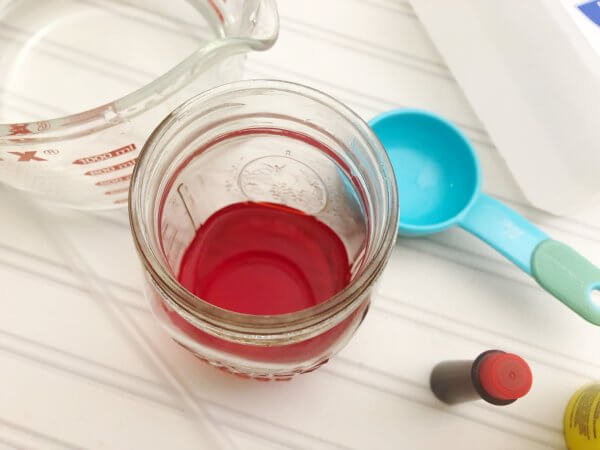
STEP 2: Stick the straw through the straw hole and tighten the lid onto the jar.
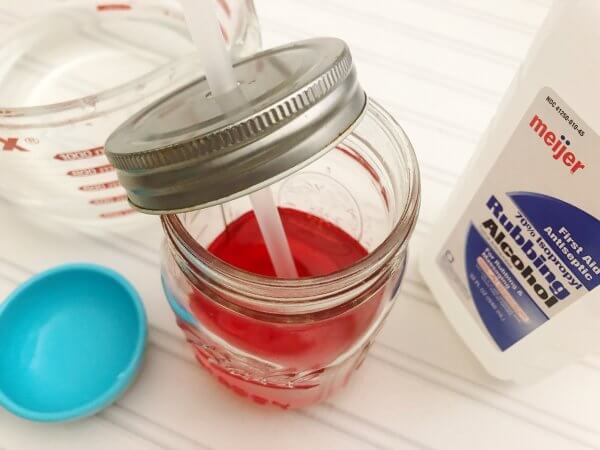
STEP 3: Mold a piece of playdough on the lid around the straw, which will hold the straw about 1/2” from the bottom of the jar.
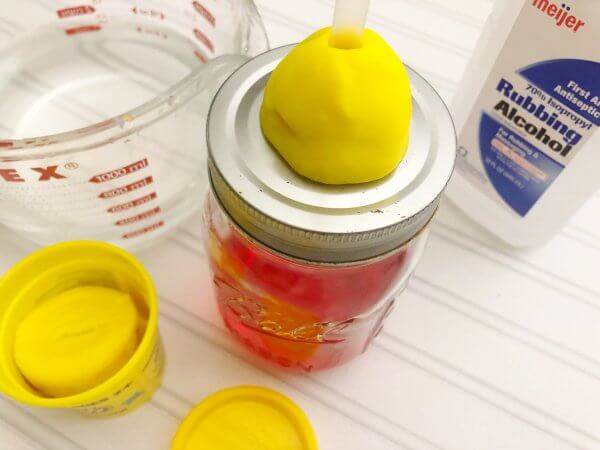
STEP 4: Place your DIY thermometer outside in the cold or in the fridge and inside the house and look at the difference in how high the liquid rises in the straw in different temperatures.
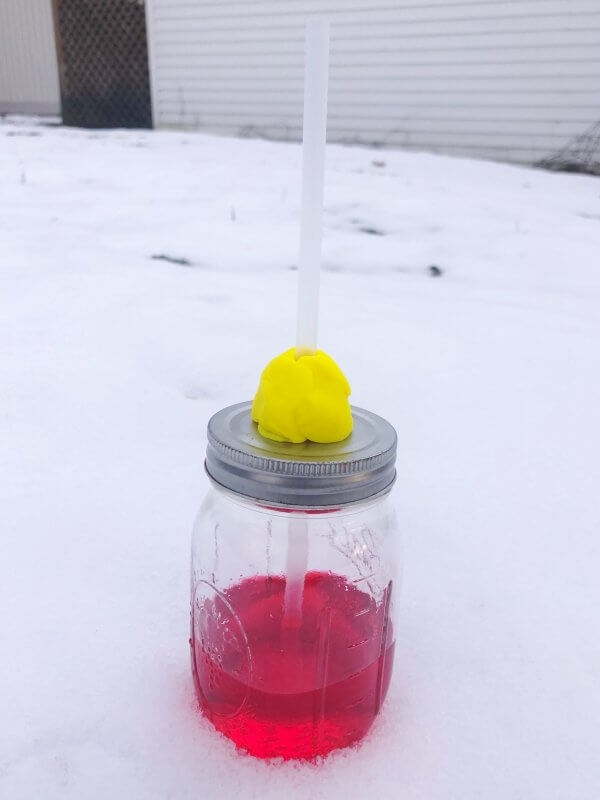
More Fun Winter Science Activities
Click on each of the links below to find more fun ways to explore winter, even if it isn’t winter outside!
- Engineer your own snowball launcher for indoor snowball fights,
- Creating a winter snow storm in a jar.
- Exploring how polar bears stay warm.
- Fishing for ice cubes indoors!
- Creating a snowflake salt painting.
- Whipping up some snow slime.
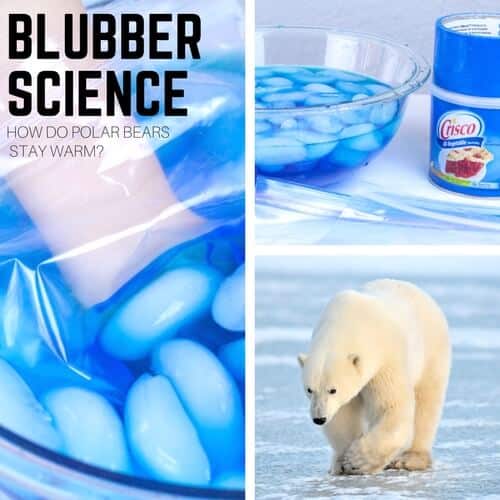
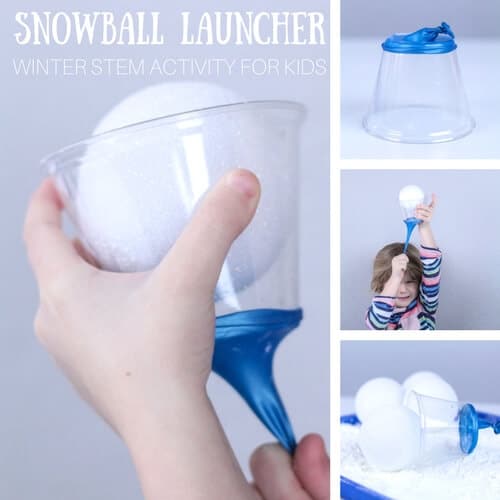
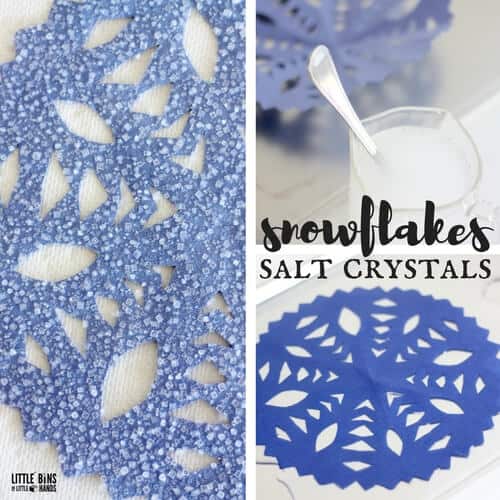
Printable Winter STEM Pack
Even if you don’t live in a snowy winter climate, there are many ways to explore the season!
WHAT’S INSIDE? You’ll find 250+ Pages of Winter theme projects for science, STEM, and art!
- 25+ Winter science activities and STEM projects for kids that are easy to set up and fit into the time you have available even if it’s limited! NEW: Observation sheets for activities.
- Printable winter theme STEM activities that are simple but engaging for home or classroom. Perfect for K-2 and beyond and adaptable to many skill levels.
- Find simple background science explanations to share with kids while they explore hands-on and playful experiments, projects, and activities! Fun with physics, chemistry, design, engineering, and more!
- Easy to gather supplies makes these STEM activities ideal when you have limited resources available. Perfect for trying with groups of kids.
- Engaging winter STEM activities packed with winter theme activities, journal pages, and design process steps! Includes structure-building cards, STEM challenge cards, and screen-free coding activities.
- Fun snowflake theme STEM, including snowflake cutting templates, snowflake tinker cards, and snowflake science activities, including a snowflake formation cycle!
- Even more, winter printable sheets include hibernating animals sort, snow weather cycle, 5 senses for winter journal pages, thaumatrope patterns, and fun extras all with a winter theme!


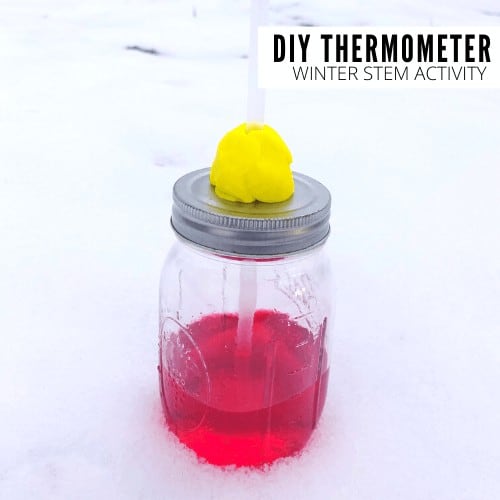

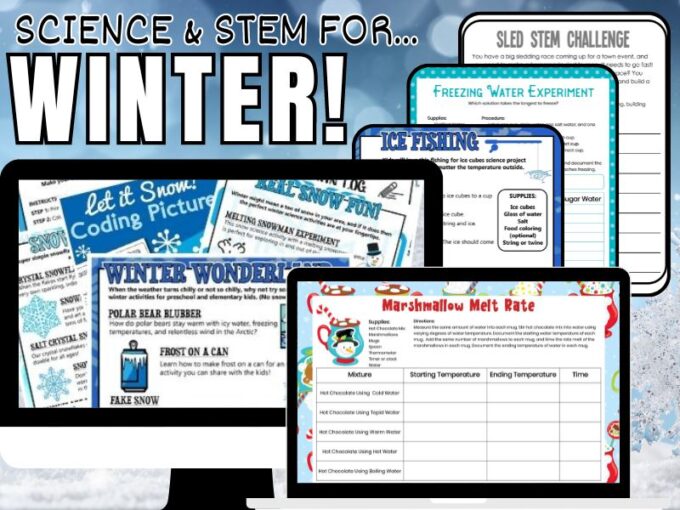






Be careful,! This is a great activity, but please make the liquid a yucky color. It is toxic because of the rubbing alcohol and looks good to drink and has a straw!
Great suggestion, I added a safety note with supplies list!